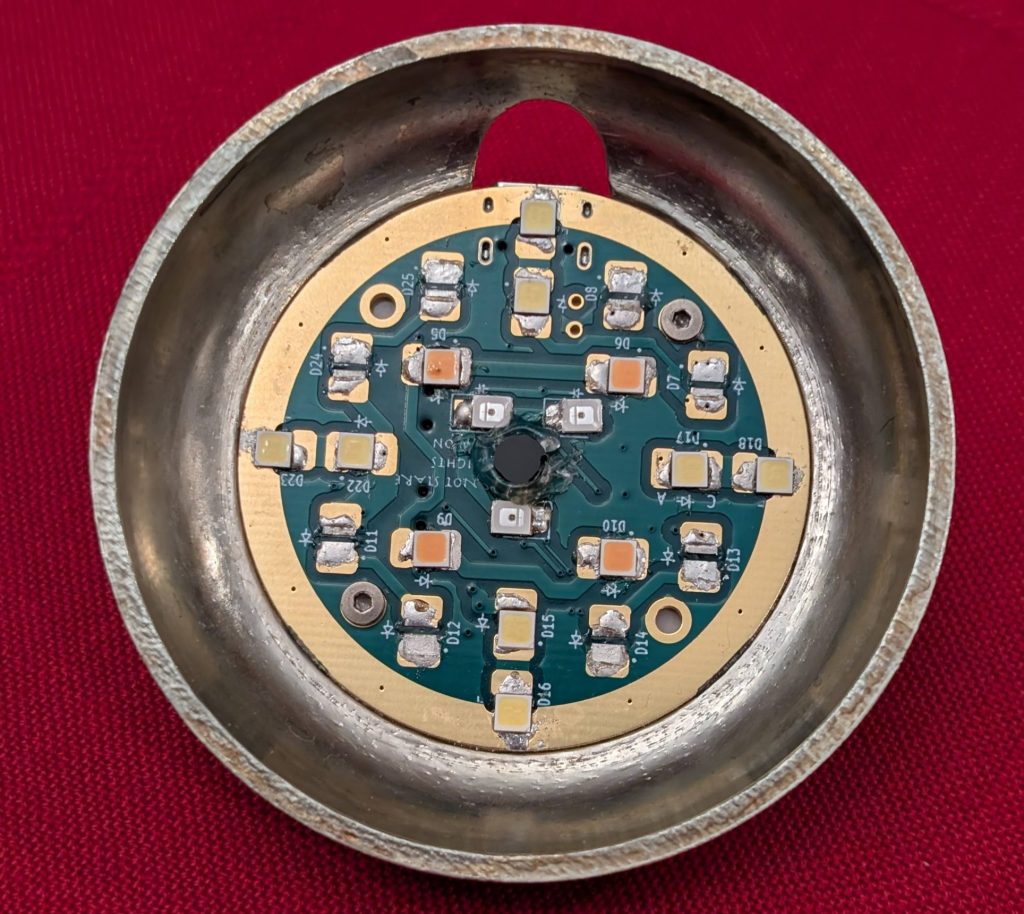There are some things humans need which don’t entirely make sense. Exercise is one example. It takes lots of energy to do exercise, so it seems counterintuitive that we would need what might be considered a waste of energy. Another example is sunlight. Sunlight is known to cause cancer, indeed we use it for sterilization in some cases, and yet our bodies still need it to survive. The reason that we probably need both exercise and sunlight despite their cost is that, simply put, they were always there, humans just always were doing some walking and some time in the sun, so our bodies came to count on this activity for various needs.
While there is a general awareness of the importance of getting some sun, the understanding most people have is much less than that of other needs like exercise and diet. As person of Minnesota myself, with many months of winter where showing any skin outside is deeply unpleasant, I wanted to explore this need a little more.
If you look, you can find red light therapy, blue light therapy, and even green light therapy proposed as medicinal cures for various troubles. And of course, why not just have one, combine red, blue, and green and you get white, and large amounts of white light are sometimes recommended for seasonal affective disorder (SAD) which is the general clinical term for “too little sunlight making you sad.”
This might all seem a little bit of nonsense to some people. How can light really do anything to humans? We aren’t plants after all. Certainly, some of the things light therapy people claim can be cured are nothing more than wishful fancies. Yet there is a solid scientific basis for the need of sunlight.
In simple terms, chemical bonds of all the materials that make up a human have a certain springiness to them depending on the type of bond they are. As a result, every chemical bond will be sensitive to certain wavelength(s) of energy. Some of these bonds are sensitive to, capable of absorbing, light produced by the sun.
Absorbance of a wavelength adds energy. This can be used to drive important biological reactions. It can also blast apart bonds and destroy critical cell components, especially under intense light. And the sun is quite intense. We often don’t fully appreciate just how bright the sun is and how much power is in that solar energy. This is primarily because our eyes automatically adjust so well, between bright and dim light, that we can’t feel just how much difference there is between dim and bright, which is many orders of magnitude.
The key to avoiding pseudoscience here is to trace the wavelength of light directly to what chemical bonds are going to be interacting with that light.
Here is a general list of some of the most relevant wavelengths:
250 – 2500 nm: sunlight at the Earth’s surface produces energy in this range. Strength varies across this spectrum, and also by time of day and time of year.
400 – 700 nm, standard visible light range for the human eye
310 – 1000 nm, expanded visible light range, light visible to humans but will appear very dim outside of the standard visible light range
205 nm (UVC): peak of peptide absorbance (in proteins)
264 nm (UVC): peak of DNA absorption, primarily why the sun causes cancer
280 nm (UVC): peak of tyrosine and tryptophan (in proteins) absorbance, another factor in UV sterilization
297 nm (UVB): peak of absorbance for Vitamin D production
400 – 420 nm (blue): the Soret band, cytochromes and hemoglobin (this is where non-oxidized blood appears blue in veins), a major biological absorption band but limited if any direct impact on cellular functions that I have been able to find
480 nm (blue): peak of melatonin suppression, leads to alertness and sleep suppression
550 nm (green): peak sensitivity of the human eye
650-810 nm (red, far red, near infrared): some evidence of improved mitochondria activity
Note that these are “peaks” and absorption is generally spread across a ‘hill’ of wavelengths, at least +/- 10 nm.
Note also that the human body is a massive mix of chemicals, and it is likely there are other photochemical reactions that are simply not yet well understood.
The 200 – 300 nm range in particular contains a lot of important biological machinery that can be impacted by sunlight in a negative way, and this is why we wear sunscreen and use UVC as sterilization. IRPA recommends 1 mW/m2 max UV exposure for eight hours, with between 200 and 305 nm considered significantly more harmful, above 300 nm the harm decreases rapidly.
Unfortunately, vitamin D synthesis occurs right at the edge of the “really bad” part of UV light. On the positive side, humans don’t seem to need very much UVB light, short or weak exposure is sufficient. How much UVB light is in the sun varies by time of year, as well, with many places in deep winter not getting any significant amount of UVB.
Tanning is linked to both UVA and UVC. The stronger impact of the two, UVC, is caused by a direct response to DNA damage. So to get a really good tan, you need to cause extensive damage to the DNA of your skin. Yes, this is just as bad an idea as it sounds.
Excessive amounts of blue light aren’t toxic, as some products seem to suggest, but they can mess with your sleep cycle. Linked to melatonin, essentially this blue light helps trigger alertness and wakefulness in its presence, and helps trigger sleep in its absence. Traditionally 460 nm is assigned to melatonin suppression, but research suggests higher, 480 and 507 nm is more where the suppression is happening. In everyday terms, that is blue and blue green for staying alert. Other colors, including deep blue (near purple) and yellow-green should be “night” safe, not messing with sleeping.
Most electronic devices with screens these days have settings for reducing blue light output. Full blue light is good during the day, but utilizing the reduction in that blue light at evenings and nights should help maintain a proper sleep cycle.
One set of really neat products that so far appear to be underutilized are LM302N Day and Nite LED chips (that’s the current model, may change in a few years) from Samsung as well as some competitors from Luminus Devices and perhaps others as well. These chips have versions for productivity with large amounts of the exact blue light to help keep you awake, and then nighttime versions (usually a more reddish/yellowish white) with heavily minimized amounts of the melatonin inducing blue light. These are melanopic ratio tuned LED chips (not LED bulbs) and so are hard for many people to find/use directly, but the night versions are really the only reliable way to get white light that won’t discourage sleep.



Looking at off-the-shelf LED bulbs, you aren’t really conclude easily how much melatonin-relevant light they have unless they publish their spectrum in data sheet. However, high-CRI bulbs with a high K rating and high kelvin rating (CRI 90, 6000K) will generally be more “wakeful” and low Kelvin and lower CRI (CRI 70, 2700K) will be more “sleepy” coloring, relatively, but it isn’t a guarantee. Also keep an eye on lumens/watt, higher is better, which is a general indication of efficiency.
Interestingly, plants are also more sensitive to some wavelengths, and that’s actually where most of the LED research has gone towards, for efficient horticultural and greenhouse lighting. These melanopic ratio lights appear to be a derivate of that work.
Since white lights that minimize the melatonin wavelengths are rare, the use of colored lights is a simpler approach for evening lighting. I like using green light (avoid the blue green side of green, stay closer to yellow) for an evening light. Red is also a common choice, along with yellow. But both are not particularly useful as task lighting.
I remain unconvinced on the solidity of red/far red light light for “mitochondrial” activity promotion, which is the primary argument for red light therapy. There is supporting researching but there is a lack of the agreement or clarity compared to the other wavelengths discussed so far. For example, most red light therapy people point to cytochrome as the chemical impacted by absorption, but that doesn’t match with cytochromes actual absorption (more blue mostly), and this impact seems to perhaps be driven by the absorption bands of water (see referenced article below). That said, I do think it is a decent idea to try including far red light and near infrared light into more mood-focused lighting just for the sake of imitating more of the solar spectrum. It may have some value and appears to have no side effects. Nearly always, far red light is minimized in LED bulbs because it is inefficient (our eyes can’t see it very well, a bright far red led blasting large amounts of far red will still look dim to our eyes).
Overall, with what research has shown so far, here are the action steps I would for healthy use of light. Note that I have not discussed eye strain, which is more of a use based (look away and blink occasionally when reading or using a screen) and contrast based rather than wavelength and reaction based light health.
Action items:
- Increase the amount of light when working indoors, especially in winter.
- Modulate the amounts of melatonin involved blue light for wakefulness or rest
- Carefully add some UVB light dose
- Add some far red lighting, if curious or for completeness
I have used an LED panel light, designed for photography, mounted on a lightweight tripod, as a nice indoor light. It can produce a lot of light in a diffuse way, and has an adjustable knob to switch it between more blue white and more yellow/red white. Highly recommend.
LED light strips mounted around the ceiling can produce a nice “atmosphere” in winter, giving a room a greater depth more like sunlight. Most of these can be changed to different colors, a bright blue white for energy or a softer green, yellow, or red for relaxing lighting in evening.
I quickly realized that most “therapy” or “mood” lights aren’t particularly amazing. They are either ridiculously expensive (and even then, still unclear of their value) or really cheap, and just using lots of generic led lights. The cheapish LED photography panels seem more useful to me due to being more adjustable and multipurpose.
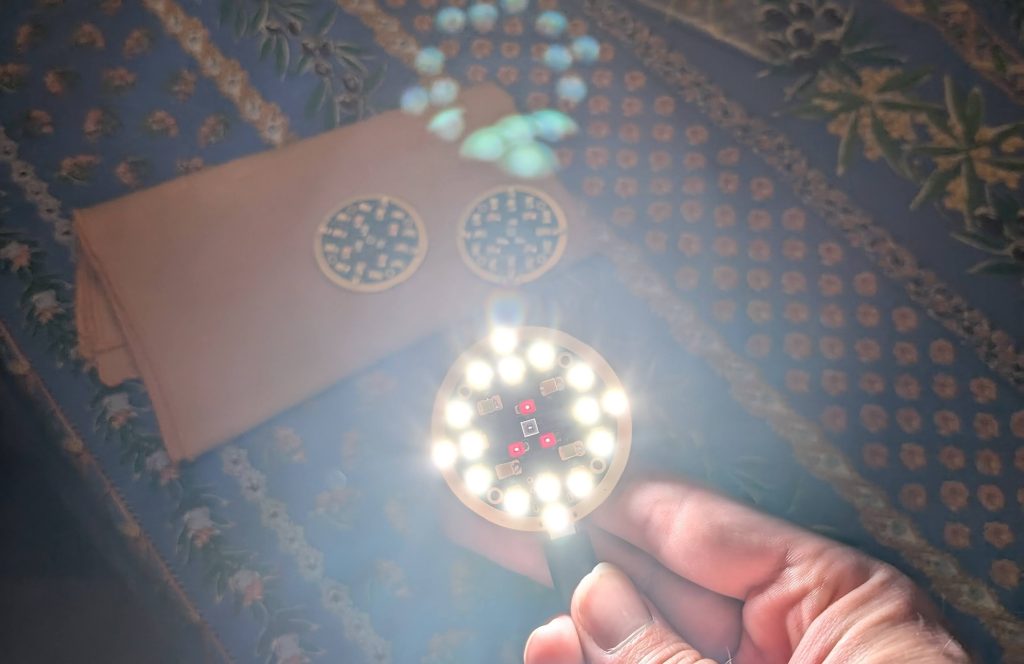
If you are really into this, you can do as I did. I designed my own light using the Samsung melanopic ratio LED chips and several others. LEDs are pretty easy as far as circuit designs go, so if you have some hobby experience with electronics this is worth a try. High quality LEDs with good datasheets from reputable manufacturers are relatively cheap – more trustworthy and cheaper than most devices.

The idea is a full spectrum light with a switch for either a daytime or nighttime friendly white light.
6000K “wakeful” LM302N DAY LEDs from Samsungs for daytime use (8x)
2700K “sleepy” LM302N NITE LEDs from Samsung for nighttime use (4x)
Far red LEDS for a fuller spectrum (3x)
2 mW 310 nm UVB LED for vitamin D synthesis (1x)
The UVB light is worth talking about more. I used a QLUV07EYGE chip which is rated for 2 mW of 300-315 nm light. The nice thing about LEDs is that they can have very narrow outputs. This UVB light, should produce some, but very little, UV light in that unhealthy sub 300 nm range. The max output of this LED’s power is the same as the max recommended 8 hour exposure to UV including UVC, so extended exposure should be safe even if it did produce more UVC.
This UVB chip can be complemented with a ZWB2 filter, a type of optical glass filter. These seem to vary a bit but most of them fully block UV light below 280 nm, and some even below 300 nm (and some a bit above that which might render the LED useless too…). The combination of all of these UVB light considerations is to try and get the necessary light for Vitamin D synthesis with none of the dangers of cancer, sunlight, fully removing the UVC.
I tested this light with a UV test card, and interestingly it came up negative on both the UVC and UVA test sections (the card didn’t have a UVB test section). That is the only real indication I have that the UVB diode does indeed stick to the narrow output range desired.
I put the far red lights in series with the UVB lights so that I would have a visible, warning light glow whenever there was power to the UVB LED. It turns out that the UVB light is itself faintly visible as a purple-blue color, so that feature was probably unnecessary.
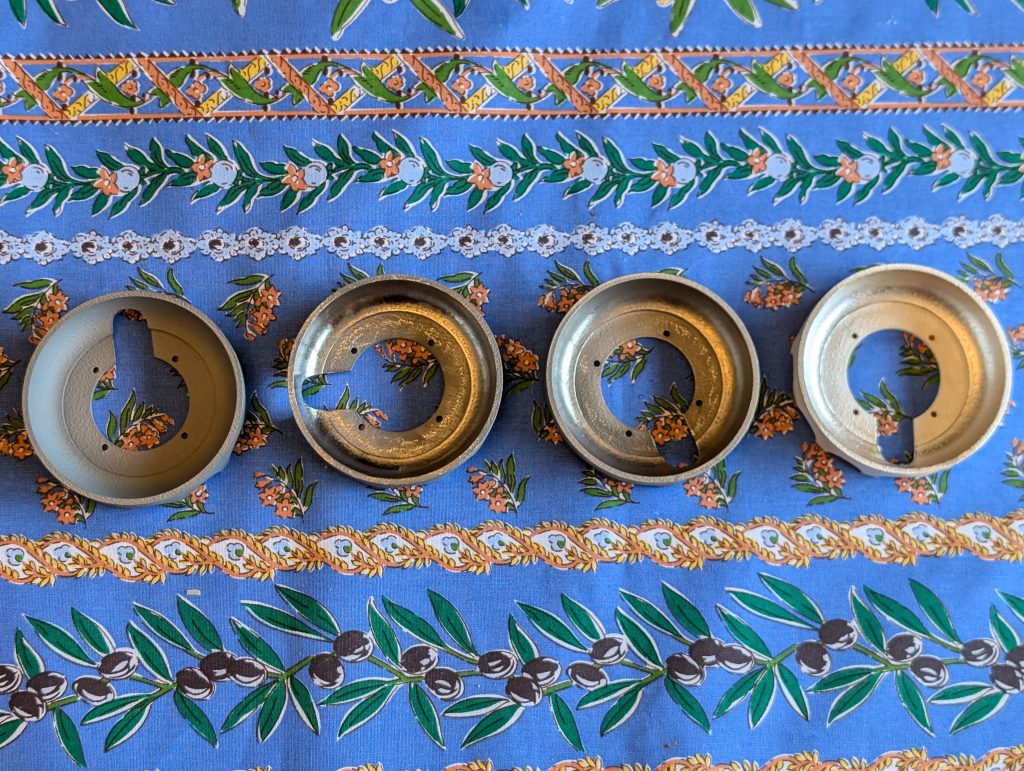
One note is these mid power 6V LEDs can really generate a lot of both light and heat. I had 16 of the Samsung LEDs on one board and it was like staring at the sun. It also got hot enough to desolder the chips off the board even with lots of thicker copper on the board and a large heatsink. 8x of the daytime and 4x of the nighttime is still quite bright and much more manageable for heat. Even just 4x for both would probably be sufficient for a lamp, and the max I would attempt without a good heatsink. Expect it to get a bit hot regardless.
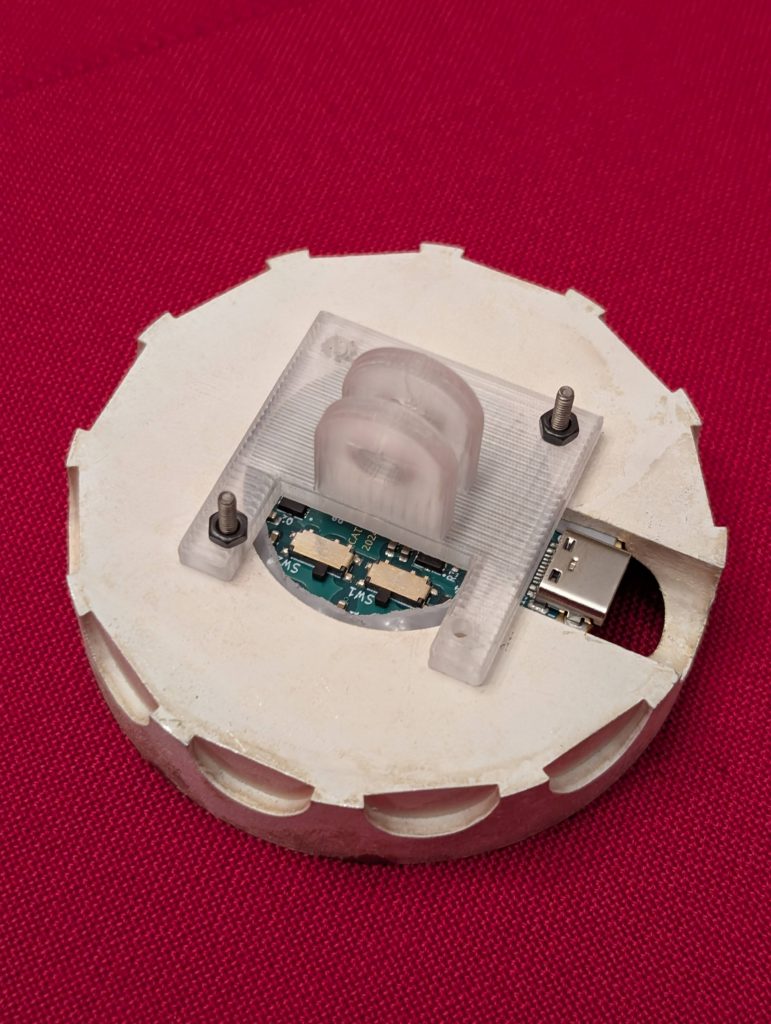
For power, I used a USB-C PD chip set to request 12V only, and use the 12V as voltage control for all the LED chips on the board, instead of doing current limiting by resistors or driver chip. This is simple and efficient but requires careful selection of components, because the power supply can vary (ie be 12.2V) and chips need to be able to handle the range. A 12V TVS diode helps limit the risk of higher voltage, as well as a small inline resistor on the UVB and far red LEDs.
KiCAD Design Files:
https://github.com/winedarksea/uv_light
References:
https://www.nature.com/articles/eye2015252 (expanded visual spectrum)
https://pmc.ncbi.nlm.nih.gov/articles/PMC6462613/ (far red)
https://www.pnas.org/doi/10.1073/pnas.2205301119 (melatonin rangę)
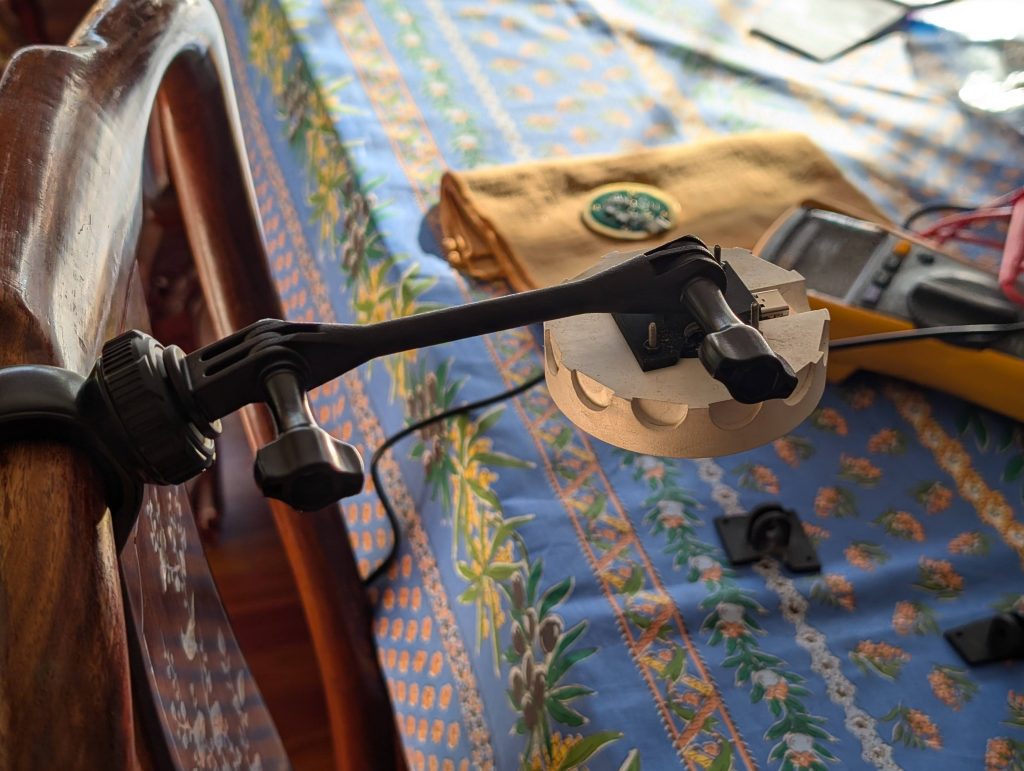
Colin Catlin, December 31st, 2024

